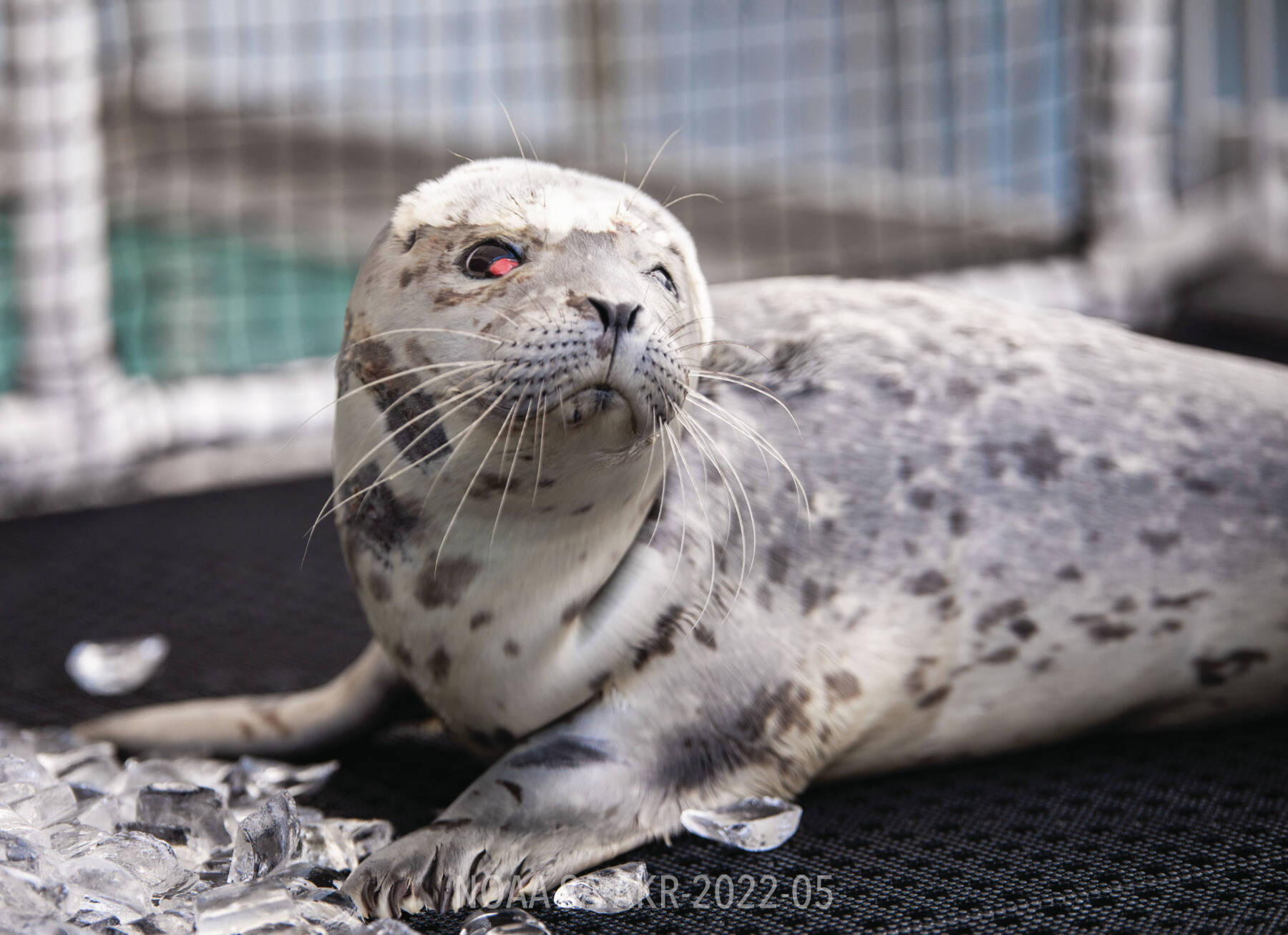Two young Seldovia residents and their parents helped rescue an injured harbor seal pup last month.
Nine-year-old Tulsa and 6-year-old Pascal Cziko are the children of recently hired Kasitsna Bay Lab marine biologist, Paul Cziko. July 24 the two children, along with their parents, encountered an injured harbor seal pup on the beach next to the lab.
“We were walking on the beach and we were going to go back up to the marine lab and I saw what I thought was a piece of driftwood. We looked closer and it was actually a baby seal,” Tulsa Cziko said.
Piper Paulish, the children’s mother, said the family initially thought the seal was dead, but “then he popped his head up and looked at us.” Paul Cziko said it was apparent the seal pup was injured due to little punctures by his face and a red eye.
The Cziko family recently moved to Alaska from Eugene, Oregon, and have only been in Seldovia for six weeks. The children had just finished reading Susan Woodward Springer’s book “Seldovia Sam and the Sea Otter Rescue,” about a boy who finds an abandoned sea otter and takes care of him for a night until a biologist can take over. This helped prepare them for the experience because of the similarities of finding an animal in need of human assistance.
Pascal Cziko said the family dubbed the seal “Woody” short for “Driftwood.”
“That’s what he looked like when we found him,” he said.
Jane Belovarac, wildlife response curator at the SeaLife Center, said the center had been alerted to the pup once before the July 24 incident. The “kid” was called in with injuries July 20 from Halibut Cove, Belovarac said, but it was in a place that was inaccessible during high tide.
“This animal looked like it was in decent body condition but it was a young animal, probably a weanling,” she said. “Harbor seal pups are only fed by their moms for about a month or so and then they separate and the pup has to figure out how to hunt on its own.”
Before the first rescue attempt could be completed, the seal had returned to the water.
“When we got a call from the Kasitsna Bay Lab on Monday and saw a photo of the animal, it looked like it was the same kid. This time it had more wounds and was a little skinnier,” Belovarac said.
Partners at the Seldovia Village Tribe were able to respond and pick up the pup with authorization from National Oceanic and Atmospheric Administration.
Seldovia Village Tribe’s Environmental Coordinator Stephen Payton organized the effort to catch the animal properly and get it in a kennel. Mako’s Water Taxi donated the fare to bring the seal back to Homer. A SeaLife Center representative in Homer drove the pup to Sterling and the Seward staff brought her to the facility in Seward.
Payton recently finished a one-week training with the SeaLife Center to update proper skills to respond to stranded marine mammals.
“Once we received a call from the SeaLife Center about this case, we have go out to make an assessment and see if the animal actually needs to be rescued or if it might be better off left alone,” Payton said. “We got out there and it wasn’t moving around a lot. We could see the wounds and the animal was definitely not hard to capture. We just walked up behind it and threw a wet towel on the animal so it wouldn’t get too stressed out. It definitely didn’t have a lot of fight left in it.”
SVT also works with the U.S. Fish and Wildlife Service in Anchorage to respond to injured animals in the area. Another issue Payton has observed over the summer is incidents of avian flu with the local eagle population.
“You can see it takes a village network to do this. We can’t do it alone, that’s for sure. We do it this way to make the travel as quick as possible so the animal doesn’t have to go through another day without getting help,” Belovarac said.
The animal will stay in Seward for undetermined amount of time. She had injuries to both eyes and is currently on antibiotics.
“Fortunately we gave her some fish for the first time yesterday and she ate right away,” Belovarac said. We’re feeling positive but she’s not out of the woods yet.”


